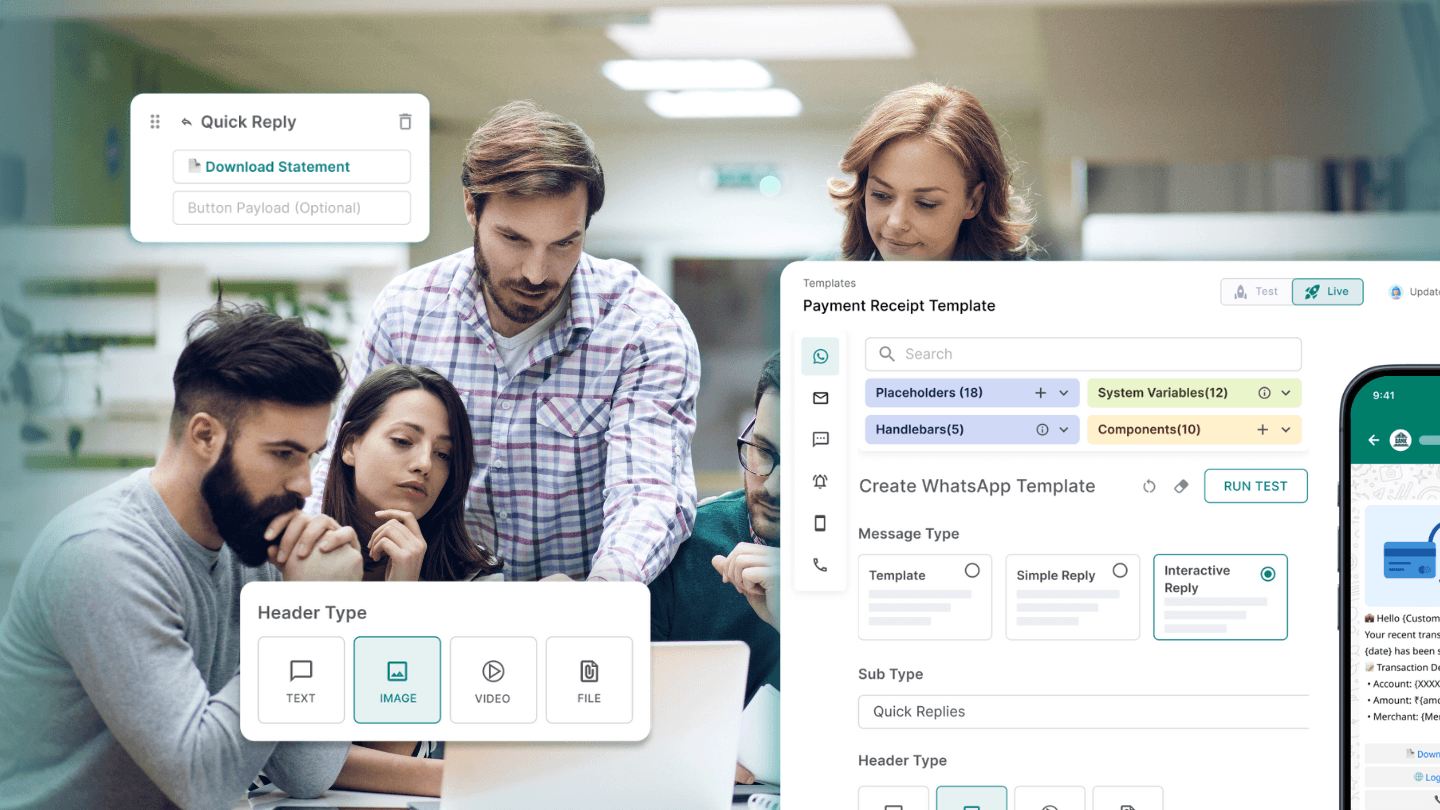Banks and insurers have worked hard to build customer trust, yet the moment a message lands in a customer’s inbox with the wrong tone, a missing logo, or an outdated disclaimer, that trust erodes.
In a sector governed by regulations as detailed as the Reserve Bank of India’s localization and audit-trail rules, consistency is not a branding nicety, but is a compliance requirement.
But, unfortunately, most institutions still manage content for email, SMS, WhatsApp, and push in separate silos, each with its own vendor portal and approval process. The result is an inconsistent and cumbersome experience for customers and a daily operational grind for marketing, product and compliance teams.

A Customer Communication Management platform (CCM) that unifies templates across channels offers a practical way out of this maze. A well-designed CCM will help you create, preview, and manage message templates for all your channels from one single location.
And, when regulations change or a campaign pivots, a single edit on your CCM should update the content on every channel, keeping the brand voice, legal copy and tracking parameters in perfect lock-step.
By this time it should’ve been obvious, but we’ll reveal it anyways.
If you’re wondering what CCM platform we’re talking about, it’s Fyno.
In this blog we will dive deep in why Fyno’s template manager is one of the most powerful tools for customer communication. Let’s get going.
Why templates are the heart of brand voice
A template is more than a layout. It anchors tone, terminology, typography, colour, dynamic variables and mandatory disclosures. If template governance breaks down, so does brand voice.
Banks face special pressure here because their messages carry monetary consequences. A mismatched interest-rate figure in an SMS could trigger customer complaints; a missing privacy clause in a WhatsApp notification could invite penalties for non-compliance .
A template layer that is centralised, version-controlled and approved directly through DLT and Meta workflows keeps those risks contained.
From five editors to one: how a unified template editor works
Fyno’s template editor is designed to help teams create multiple variants of a same message for email, SMS, RCS, push or in-app without writing code or opening separate dashboards. The simple drag-and-drop editor supports multiple languages, dynamic handlebars, components, variables, and conditional logic.
Built-in governance without bottlenecks
Consistency cannot come at the expense of privacy. Fyno’s template editor therefore comes with a range of features like maker-checker flows, role-based access and full audit history.
Each change, including who edited what and when is captured with timestamps, making it easy for compliance teams during an audit.
Fyno’s template editor also comes with advanced version control that allows you to rollback to a previous version in a single click. This level of control, combined with single sign-on and role-based access, satisfies strict internal security policies without locking marketers out of their own content .
Smart optimization and cost control
Fyno’s template editor comes with a built-in insights engine that notifies you when your SMS length exceeds the ideal number of credit(s). The platform also suggests shorter subject lines or cheaper fallback channels to keep delivery bills in check, and these recommendations appear before a template is published.
For banks sending tens of millions of OTPs and statements each month, such marginal gains quickly translate into noticeable cost savings.
Faster approvals, lower regulatory risk
The traditional roadblock for banks is the external approval cycle. SMS templates must pass DLT checks, while WhatsApp needs Meta sign-off. Submitting, waiting, and then copying the approval ID back into multiple vendor portals can take days. By embedding these gateways inside the CCM, teams submit once and have the resulting IDs synced automatically across suppliers . The reduction in manual re-entry removes a common source of human error that could otherwise expose the bank to TRAI penalties for mismatched template usage .
Getting started with unified template management
Fyno makes it really easy for your to streamline your messaging templates. You can bring all your existing messaging templates into Fyno and connect your Meta and DLT accounts to streamline approvals of future templates.
Conclusion
Brand voice, regulatory compliance, and operational efficiency are intertwined for financial institutions. Fragmented template management jeopardizes all three, yet unifying templates inside a modern CCM turns that liability into an asset. With one editor, one audit trail, and one approval path, banks and insurers can meet customers on any channel, in any language, at any scale—without losing the unmistakable tone that makes a brand trustworthy. The technology is proven, the governance is built in, and the gains—in faster launches, lower costs, and fewer errors—are immediate. For teams tasked with both protecting the balance sheet and delighting digital-native customers, unified templates are no longer a nice-to-have; they are the cornerstone of reliable, compliant, future-ready communication.


